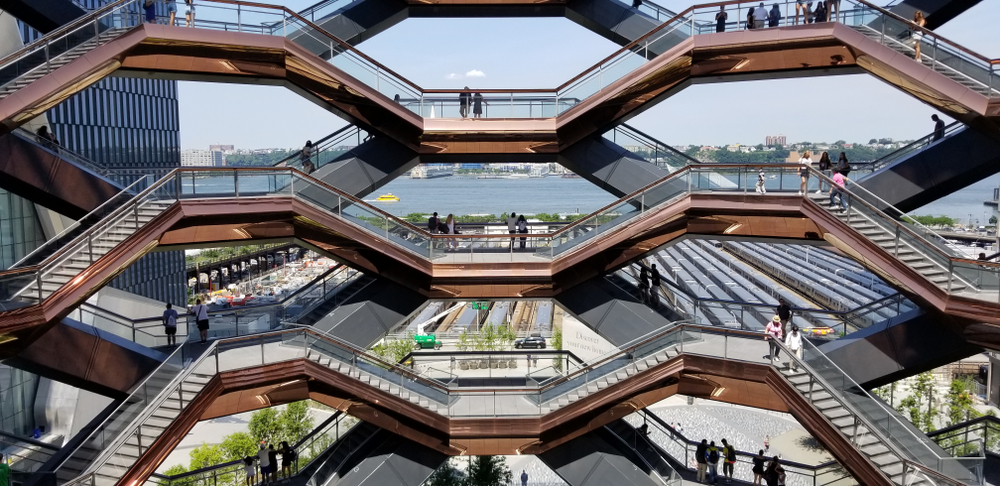Introduction
In today’s digital world, full of cybersecurity risks, the role of a Chief Security Architect has never been more vital. These experts are the defenders of three key areas: data, identities, and the code that powers it all. They form the structural support for a company’s cybersecurity efforts, providing a secure foundation from the ground up.
As businesses increasingly move to cloud platforms, the complexity of managing who gets access to what—known as Identity and Access Management (IAM)—also rises. The Chief Security Architect takes the lead in this area, ensuring only authorized individuals can access sensitive information. In short, they are the linchpin in a modern organization’s security, combining technical skills with strategic oversight to keep the digital landscape safe and secure.
In today’s world, data is like gold, and Chief Security Architects are the guardians. They make sure sensitive information stays safe from hackers. But hiring for this key role is about more than just tech skills. It’s about finding someone who can bring people, processes, and tech together to build a strong yet flexible security system.
Now, let’s talk about the first step to finding that person: the interview with the security recruiter. This first chat is a key moment for finding the right fit for this complex role.
Security Recruiter Screen

A Security Architect Interviewing with a Recruiter
In the recruitment journey for a Chief Security Architect, the initial dialogue with the recruiter carries significant weight. This conversation is essentially a preliminary assessment, focusing on a candidate’s capacity to safeguard the core elements: identity, data, and code. It’s up to the recruiters to delve into specialized topics like Identity and Access Management (IAM) on cloud platforms, and secure data protocols.
The candidate should not only have a theoretical understanding but also be able to discuss practical experiences where they’ve successfully protected data and managed identities.
Additionally, the talk should shift to the candidate’s skills in cloud-native secure coding. A Chief Security Architect isn’t just about defense; they must also proactively secure code, particularly in the cloud.
Recruiters also need to evaluate the candidate’s people skills, like leadership and communication. These traits often show how well someone can bring together people and processes to secure identity, data, and code. Ask candidates, “What was your churn %? Why?” “What is your retention rate?”.
The initial chat serves two purposes: assessing the security architect candidates technical skills and cultural fit. This sets the stage for later, more specialized interviews. The recruiter also sets the tone for the rest of the security architect hiring process, emphasizing the company’s focus on securing identity, data, and code. After this, we move on to the Resume Review, where the recruiter helps the candidate fine-tune their resume.
Screening a Security Architect Resume
Following the insightful recruiter interview, we pivot to a stage that can be likened to home staging in real estate. Rather than tailoring a resume for a specific role, the objective here is to curate a document that accurately portrays the candidate’s career journey, particularly their prowess in securing identity, data, and code. Moreover, this phase involves a collaborative effort between the recruiter and the candidate, akin to an allyship that maximizes the latter’s marketability.
Firstly, no resume is complete without the essentials: Full Name, Contact Information, and LinkedIn URL. These basic elements serve as the digital calling card of a prospective Chief Security Architect. Importantly, in our digital age, the LinkedIn URL provides an extended platform to showcase one’s capabilities beyond the confines of a resume.
Secondly, a concise yet impactful Introduction follows. Comprising just 2-3 sentences, this section serves as the candidate’s elevator pitch, articulating their core competencies in securing identity, data, and code.
Subsequently, the Skills Table Chart comes into focus. Here, candidates enumerate their specialized skills, from IAM to secure coding practices, presented in an easily digestible format for quick scanning.
Furthermore, the Professional Experience section takes center stage. Each entry should not merely list responsibilities but rather illustrate tangible achievements in the realms of data, identity, and code security.
Additionally, the Education and Certifications sections provide the academic and professional credentials that back up a candidate’s skills. Importantly, including the license numbers for certifications adds a layer of credibility and trust.
Also, a section on Extra-Curriculars can offer glimpses into the candidate’s breadth, including any hobbies or volunteer work that align with the position. Finally, the importance of current and gold-standard References cannot be overstated. They serve as social proof of a candidate’s skills and integrity, giving weight to their application.
Having deftly navigated the complexities of resume “home staging,” we arrive at the next critical juncture: the First Interview with the Hiring Manager. This meeting elevates the screening process from paper to person, where the candidate’s expertise in securing identity, data, and code is explored in a blend of personal career narratives, business acumen, and technical proficiency.
Hiring Manager Screen
As we advance to the first interview, the focus shifts from an assessment of qualifications on paper to a more dynamic and nuanced evaluation of the candidate. Here, the Hiring Manager—armed with the insights gained from the resume and the recruiter’s notes—engages the candidate in an intricate dance that intertwines personal career trajectories, business strategies, and technical expertise. The objective: to delve deep into a candidate’s suitability for the Chief Security Architect role, a position tasked with safeguarding identity, data, and code in a complex cybersecurity landscape.
First and foremost, the Hiring Manager seeks a candidate who is either local or conveniently located next to an international airport and willing to travel 50% of the time. Because the role involves so much design, deployment and tuning. The proximity is not merely a matter of logistical convenience. In the case of local candidates, it’s an indicator of an existing network and familiarity with the local security landscape. For those near an international airport, it signifies a willingness and ability to be agile, to meet the demands of a global security architecture role.
In the sphere of personal narratives, the Hiring Manager probes into the candidate’s career milestones, past projects, client relationships, and professional contacts. This segment often reveals critical traits such as problem-solving skills, adaptability, and an ability to collaborate—all essential for leading initiatives in securing identity, data, and code. The manager will ask questions like, “Can you share a past project where your intervention significantly improved the company’s security posture?” or “Tell me about a time you had to coordinate with different departments to tackle a security issue.”
Subsequently, the conversation wades into business acumen. The Hiring Manager will assess whether the candidate understands how to align their security objectives with the overall business goals of the company. Given the importance of cybersecurity in today’s business environment, a Chief Security Architect must not only be technically adept but also business-savvy. Questions here may range from budget management to strategic planning, focusing on scenarios where the candidate had to make critical trade-offs between security measures and business needs.
Further, the interview deepens to explore technical expertise. Given the unique blend of AI/ML, secure coding, and IAM on cloud platforms in the role, it’s vital for the candidate to demonstrate specialized skills and forward-thinking solutions. The manager might ask, “How would you approach the architecture of a secure data pipeline for our organization?”
Finally, a crucial aspect of the interview lies in personal resonance. The Hiring Manager is not just looking for a technical fit but a cultural one as well. Do the candidate and the Hiring Manager share the same passion for cybersecurity? Do their visions for the company’s security landscape align? After all, a resonating passion for security between both parties can be the linchpin for a successful and enduring professional relationship.
Having meticulously evaluated the candidate’s career path, business acumen, and technical expertise, we move forward to a more collaborative stage: the Team Interview. Here, the collective insights of a multi-disciplinary team will shed light on the candidate’s potential to thrive as a Chief Security Architect, especially in the realms of securing identity, data, and code.
Team Screening Security Architect
As the curtain rises on the Team Interview, we find ourselves in a unique setting that aims to challenge the candidate in unexpected ways. For this critical stage, the candidate is greeted by a virtual room full of team members, albeit with their cameras off. This deliberate setup is designed to take the candidate out of their comfort zone, to reveal how they perform at their best when the usual social cues are absent.

A Security Architect Team Interview
Initially, the candidate is asked to share their vision for the role of a Chief Security Architect, particularly how they intend to approach the core objectives of securing identity, data, and code. Team members then engage the candidate with situational questions and hypothetical scenarios. For example, “Imagine the company is facing a massive data breach. How would you work with this team to address the situation immediately?” or “Explain a time when you had to mentor a CISO in a security-related project.”
Furthermore, each team member evaluates the candidate’s communication skills. Can they articulate complex security concepts in a manner that is understandable to both technical and non-technical stakeholders? It’s crucial, as a successful Chief Security Architect will need to bridge the gap between the technological and business dimensions of the company.
Midway through the interview, team members may offer subtle challenges, requiring the candidate to adapt their strategies or views in real-time. This maneuver serves to evaluate their problem-solving abilities, flexibility, and how well they can harmonize their technical knowledge with real-world applications.
Towards the end, the team will have an opportunity to share their observations and critiques, though this is often saved for a post-interview debrief. The focus remains on whether the candidate embodies the qualities necessary to champion security in all its forms—identity, data, and code.
In sum, the Team Interview is not just a platform for asking questions; it’s a carefully orchestrated performance review. It serves to elucidate whether the candidate has the skills, adaptability, and the passion necessary to become an integral part of the organization’s security fabric.
With the invaluable insights from the Team Interview freshly in hand, we turn the page to the next revealing chapter: the Whiteboard Interview. This exercise will delve even deeper into the candidate’s capabilities, especially their prowess in conceptualizing and presenting multi-faceted security strategies that encompass the core pillars of identity, data, and code.
Whiteboard Screening
As we segue into this pivotal juncture, the atmosphere is palpably charged. In attendance are none other than the Chairman, President, or CEO. Their presence serves a dual purpose: to bestow gravitas upon this exercise and to emphasize how the Chief Security Architect’s role will be interwoven with the company’s strategic objectives. Furthermore, this occasion calls for something extraordinary: the crafting of a 10-year security vision.

The candidate is entrusted with a formidable task. On a whiteboard, they must draft a comprehensive, decade-long vision plan for the organization’s security landscape. This is no ordinary vision, mind you; it zeroes in on the imperatives of securing identity, data, and code.
Subsequently, the candidate takes the audacious step of reverse-engineering this vision, unraveling its intricate components right before the eyes of the organization’s most decisive figures. “How does your 10-year strategy adapt to evolving cybersecurity threats?” or “Can you align this vision with our current business objectives?” the decision-makers might inquire. Such questions aim not merely to scrutinize, but to dissect the candidate’s foresight and adaptability.
Nearing the finale, the decision-makers sit back, meticulously evaluating the candidate’s performance. Their scrutiny goes beyond the individual’s technical prowess, encompassing their ability to engage, influence, and inspire. Ultimately, this interview is less of a test and more of a high-stakes exhibition—a unique tableau where strategy and vision intersect, determining the future security posture of the organization.
Screening an Offer to a Security Architect
In the final stage of this layered screening process, a Chief Security Architect don’t just negotiate; they command. They’ve already dissected market trends, evaluated compensation packages, and set precise career milestones.
So, when they enter offer discussions, they’re not exploring options; they’re confirming pre-established plans. Their dialogue with you reflects an understanding that the market not only desires but also needs their security architecture skills. They’ve done their homework, set their expectations, and now seek mutual respect and alignment.
Don’t surprise them or undercut their value at this stage; they’ve already done the analytical heavy lifting. This is not the time for traditional negotiation but for affirming what the Security Architect already knows they’re worth. Any deviation undermines a relationship built on mutual respect and vision.
In the evolving landscape of cybersecurity, hiring the right Chief Security Architect is crucial. Partner with Recrewmint to navigate this complex process and secure the talent your organization deserves.
—
This article was crafted with the assistance of ChatGPT, an AI language model developed by OpenAI. Its insights and language capabilities have contributed to the depth and perspective presented herein.
Discover invaluable insights on recruiting a Chief Security Architect in our latest article. For personalized, end-to-end guidance in making an exceptional hire, look no further than Recrewmint.
If you’re planning to hire a Chief Security Architect and wish to entrust this pivotal role to a specialized recruitment firm like Recrewmint, you can schedule an appointment with a member of our team here.
Copyright © 2024 Recrewmint. All rights reserved. Content created with the assistance of AI technologies, including ChatGPT. Unauthorized reproduction or distribution is prohibited.

